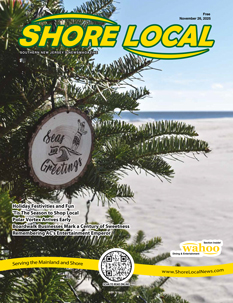By David Setley
It is with great fondness that I remember my mother singing the very popular Doris Day song “Que Sera, Sera (Whatever Will Be, Will Be)” to me as a child. Now that you are most likely humming the tune to yourself, allow me to loosely use a variation of the song’s title to discuss a wine question that I am frequently asked: Are Syrah and Shiraz the same? What about Petite Sirah? Well, the answer is yes, and no! Let me explain.
The exact origin of the Syrah grape and the wine produced from it is uncertain. Most believe that the grape was first planted by the Romans in the Rhone Valley of France, in a region known today as the Côte-Rôtie region. Some believe it was brought to this region 500 years earlier by the Greeks, as it was actually the Greeks who first cultivated wine in the Rhone Valley. Though the origins are uncertain, it is clear that the Rhone Valley is the region in which the grape became famous. The Hermitage subregion arguably produces Syrah at its finest. In fact, Syrah is the only red grape allowed to be grown in the Côte-Rôtie and Hermitage Appellations d’Origine Contrôlée (AOCs).
How about Shiraz? Genetically speaking, Syrah and Shiraz have been proven to be the same grape. Terroir is at the root of the distinction. Shiraz is the Australian interpretation, and spelling, of this grape. In 1788, the British established a penal colony in Australia with 1,000 inhabitants. Crops were planted immediately, including grapevines, to feed these new settlers. The colony’s first governor, Arthur Phillip, was the first to plant vines at his residence at Parramatta. Although initial attempts at growing wine-worthy grapes were unsuccessful, in 1833, a Scotsman named James Busby — known as the first British resident of New Zealand — returned from a trip to Europe to his new home in the South Pacific. Busby stopped in Australia with hundreds of grapevine clippings from France which included Cabernet Sauvignon, Merlot, Malbec, Grenache, and, wait for it… Syrah. Of all these varietals planted in Australia, none adapted better to the soil and climate than Syrah. It is unknown how the grape became known as Shiraz, but it is not terribly surprising. After all, in Australia, a chicken is a chook, breakfast is a brekky, and a mosquito is a mozzie. Thus, Syrah became Shiraz.

Petite Sirah, however, is a totally different grape varietal. It seems likely that Petite Sirah, or Durif, as it was known in the 1800s, had its roots in France. This grape never grew particularly well in its home country, but in 1884, a vineyard owner named Charles McIver took cuttings to his Mission San Jose in Alameda County, California. It took beautifully to the southern California terroir! Although the popularity of Petite Sirah wines peaked in the 1970s, it is one of the two varietals that I believe California does better than anywhere else. The second, in my humble opinion, is Zinfandel.
The obvious follow-up question on these three wines pertains to taste. At the risk of being a broken record, terroir is everything! First, let’s compare Syrah vs. Shiraz. The wines produced from these grapes are full-bodied and have the flavors of dark fruit, such as blackberries. However, the Syrah versions, especially those from France, are classic Old-World wines with lower alcohol levels, less intense fruit flavor, more noticeable earthiness, and a smoother tannic structure. The Australian Shiraz versions are New-World wines. The alcohol levels tend to be higher, the boldness of the fruit flavors is more intense, there is less earthiness, and the tannins are much tighter. As for which is better, that’s totally up to you. Try a French Syrah, such as Michel Chapoutier Bila-Haut-Côtes du Roussillon Villages Rouge 2021 or the Domaine Jaume-Côtes du Rhône 2020; in French Old-World tradition, these are blended wines with Syrah sharing the spotlight with Grenache, Mourvèdre, or Carignan. Compare these with an Australian Shiraz, like Penfolds-Shiraz South Australia Koonunga Hill 2021 or the 19 Crimes–Shiraz. It is best to taste your two choices side-by-side to observe how the distinct terroirs affect the same grape.
Petite Sirah stands alone. This is a New-World wine with bold fruit flavors of black raspberry and plum, notes of pepper, plenty of tannins, and relatively high alcohol levels. I am a big fan of this varietal. A few excellent examples include J. Lohr-Petite Sirah Tower Road Paso Robles 2020, Girard-Petite Sirah 2021, or Ancient Peaks-Renegade 2020, which is a blend of Petite Sirah, Zinfandel, Malbec, and Petit Verdot. If you are in the market for a favorite new California red, start with any of those!
I hope you enjoyed learning a bit more about Syrah, Shiraz, and Petite Sirah. As always, contact me at dsetley@passionvines.com or stop by the Somers Point store if you have any questions or comments. Until next time, que sera, sera… and happy wining!
David Setley is enjoying his retirement from higher education as a wine educator and certified sommelier at Passion Vines in Somers Point, New Jersey.















